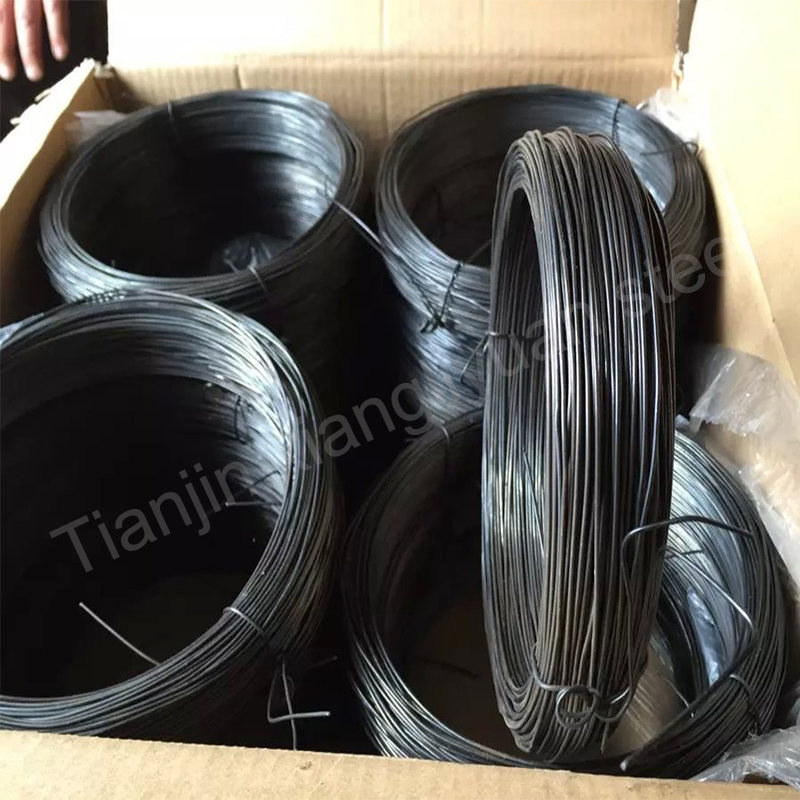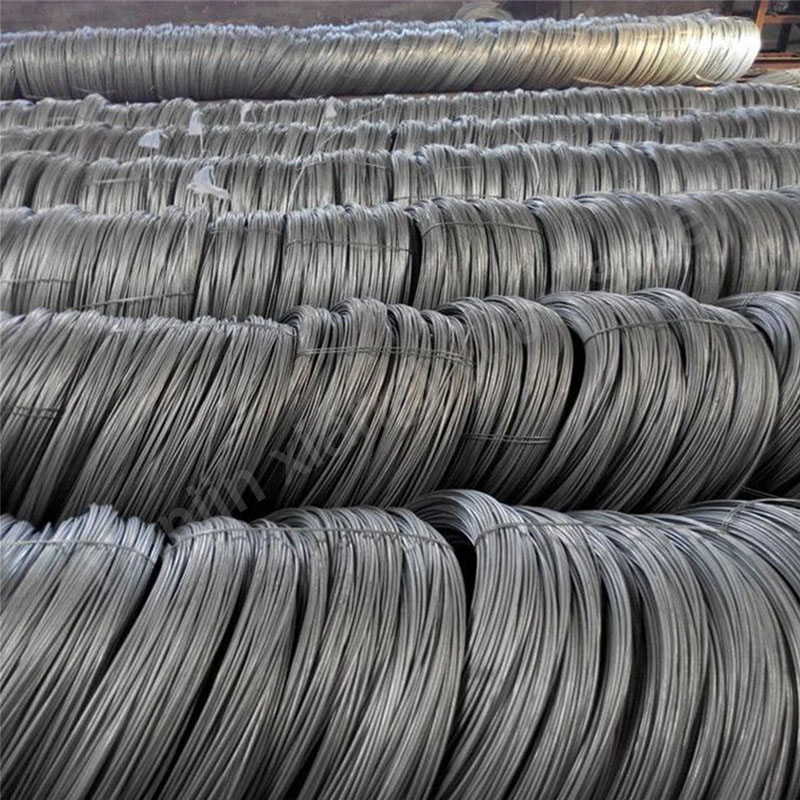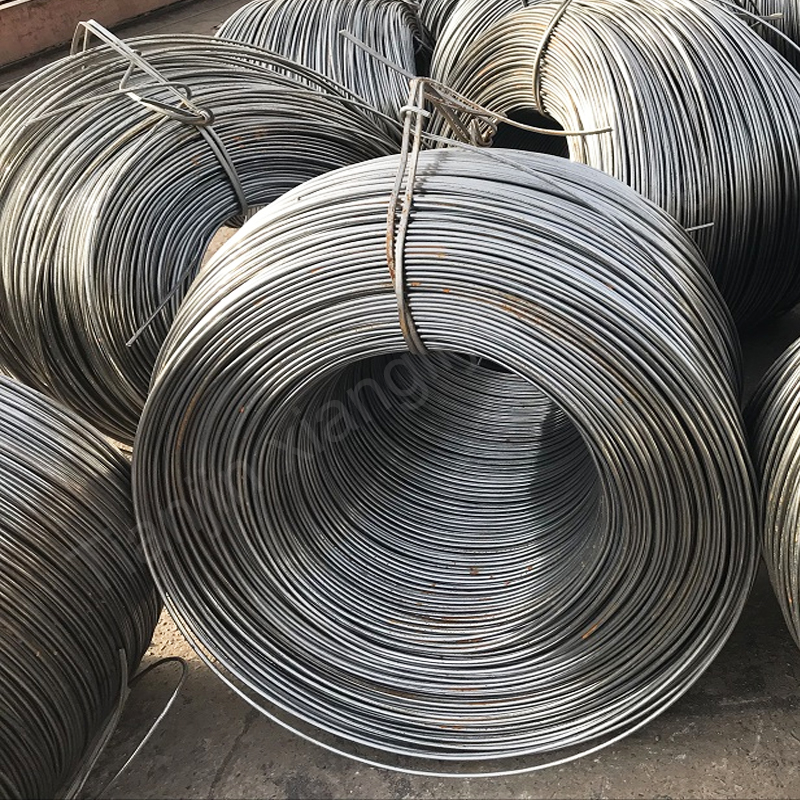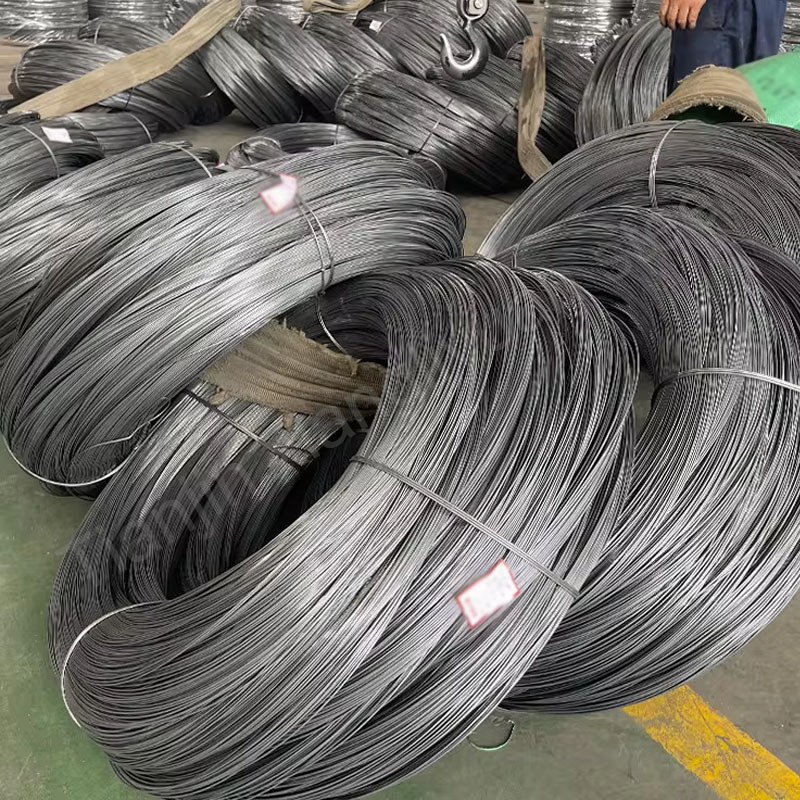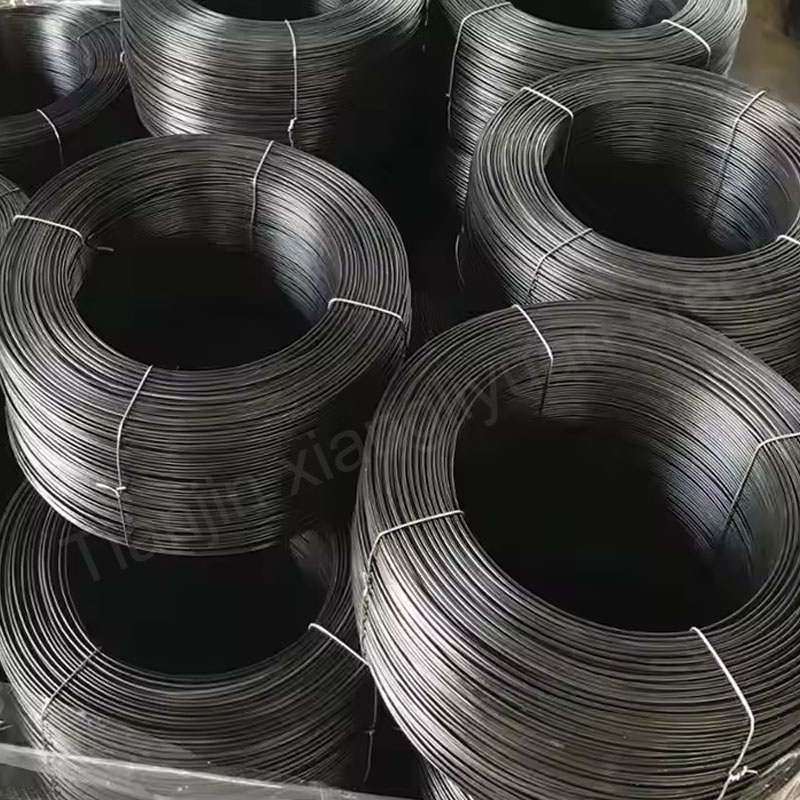Annealed steel wire is a steel wire material that has been treated by the annealing process and is widely used in various industrial and civilian fields. It is favored for its softness, strong ductility and easy processing. The following is a detailed introduction to the material, steel grade, standard and use of annealed steel wire.
1. Production process of annealed steel wire
The production process of annealed steel wire mainly includes two steps: cold drawing and annealing. First, the steel wire is stretched to the required diameter to obtain a higher precision. After that, annealing is carried out, that is, the steel wire is heated at a high temperature (generally between 600-700 degrees Celsius) for a period of time, and then slowly cooled to room temperature. Through annealing, the grain structure inside the steel wire changes, the hardness decreases, and the flexibility is improved. Annealing can also eliminate the internal stress generated by the steel wire during the cold drawing process, making it easier to bend and weld in subsequent processing.
2. Material of annealed steel wire
The material of annealed steel wire is varied, mainly low carbon steel and medium carbon steel. These steels can better adapt to different mechanical and chemical environments after annealing. Common annealed steel wire materials include Q195, Q235, 08F, 10#, 20#, 45#, etc. The advantages of low carbon steel (such as Q195, Q235) are its good ductility and low hardness, which are suitable for use as binding wires, welding wires, etc. Medium carbon steel (such as 10#, 20#, 45#) has higher strength and good toughness after annealing, and is suitable for use as raw materials for mechanical parts.
3. Steel grade of annealed steel wire
The steel grade of annealed steel wire varies according to different national standards and specific application requirements. The following are several common annealed steel wire grades:
China Standard (GB):
Q195, Q235: These two are common low carbon steel grades in Chinese standards, suitable for construction binding wires and general industrial uses.
08F, 10#, 20#: These are low carbon or medium carbon steel grades, suitable for scenes requiring higher toughness and good processability.
45#: It is a medium carbon steel with good strength and toughness, suitable for mechanical parts and other uses with high strength requirements.
American Standard (ASTM):
ASTM A641: Applicable to low carbon steel annealed wire, generally used to make galvanized steel wire.
ASTM A227, ASTM A228: These steel grades are suitable for medium carbon steel or high carbon steel, and are used to make springs and high-strength industrial parts after annealing.
European Standard (EN):
EN 10218 series: European standards specify the performance and application requirements of cold-drawn steel wire and annealed steel wire, which are often used in construction and industrial purposes.
C4D, C7D and other steel grades: These are steel grades of low carbon steel materials, suitable for use as binding wires, nails and other purposes.
Japanese Standard (JIS):
SWM, SWCH series: These steel grades are used in Japanese standards to identify annealed steel wire materials, used to make screws, bolts and other connectors.
SWRM: Used for low carbon steel annealed wire, commonly used in construction and welding.
4. Annealed Steel Wire Standard
1. Chinese Standard (GB)
GB/T 3428-2012 “Cold-drawn Low-carbon Steel Wire“: This standard applies to cold-drawn low-carbon steel wire, includes the requirements for annealed steel wire, and specifies the chemical composition, tensile strength, yield strength and elongation.
GB/T 3082-2008 “Annealed Steel Wire”: This standard is specifically for the production and quality control of annealed steel wire, and specifies the technical requirements for the tensile strength, elongation and surface quality of the steel wire. It is suitable for use in building binding wires.
GB/T 343-2000 “Hot-rolled Low-carbon Steel Wire Rod”: This standard mainly targets the technical requirements for raw material wire rods and is suitable for the production of low-carbon steel wire rods for annealed steel wire.
2. American Standard (ASTM)
ASTM A641 “Zinc or Zinc Alloy Coated (Galvanized) Low-carbon Steel Wire”: This standard applies to low-carbon steel annealed and galvanized steel wire, and specifies the mechanical properties, surface quality and coating quality of the steel wire.
ASTM A853 “Annealed and galvanized low carbon steel wire”: This standard applies to low carbon steel annealed wire for general use, and includes requirements for the mechanical properties, surface treatment and chemical composition of the steel wire.
ASTM A227 “Hard carbon steel wire for mechanical springs”: Applicable to high carbon steel annealed wire, used to make mechanical springs and other high-strength parts.
3. European Standards (EN)
EN 10218-1 “Steel wire and steel cable. General requirements for steel wire”: This standard covers the general requirements for cold drawn and annealed steel wire, including dimensional tolerances, mechanical properties and surface treatment.
EN 10270-1 “Steel wire. Steel wire for mechanical springs”: The standard for annealed steel wire for mechanical springs specifies the mechanical properties and surface quality of high carbon steel wire, suitable for occasions requiring higher strength.
EN 10244 “Steel wire products. Galvanized steel wire”: Covers the requirements for galvanized steel wire and annealed steel wire, widely used in construction and industrial fields.
4. Japanese Standard (JIS)
JIS G 3532 “Soft Steel Wire”: This standard applies to annealed low-carbon steel wire, mainly used for binding and general industrial purposes, and specifies mechanical properties and surface quality.
JIS G 3506 “Hard Steel Wire”: Applicable to annealed steel wire of medium carbon steel and high carbon steel, usually used to make high-strength products such as springs and connectors.
JIS G 3547 “Annealed Iron Wire”: Applicable to annealed low-carbon steel wire, specifies mechanical properties and surface quality, mainly used for industrial and construction purposes.
5. International Organization for Standardization (ISO)
ISO 16120 “Non-alloy Steel Wire”: Applicable to low-carbon steel and medium-carbon steel wire, including annealing treatment requirements, specifies the chemical composition and mechanical properties of steel wire.
ISO 8458 “Steel Wire. Hard Steel Wire for Mechanical Springs”: This standard applies to mechanical spring steel wire, including annealed steel wire and cold-drawn steel wire, and defines the mechanical properties and surface treatment of steel wire.
5. Uses of annealed steel wire
Annealed steel wire is widely used due to its good flexibility and processability. The following are its main uses:
Construction industry: Annealed steel wire is often used as building binding wire, especially in the process of concrete pouring, for bundling steel bars and fixing formwork to ensure the stability of the building structure.
Industrial manufacturing: Annealed steel wire is used in industry to produce various nails, screws, handicrafts, wire mesh and other products. The annealed steel wire has good toughness and is suitable for various bending and twisting process requirements.
Agriculture and horticulture: In agriculture and horticulture, annealed steel wire is used to tie crops, support plants, or as a fence material. Because of its soft and strong characteristics, it can be used many times.
Daily life: Annealed steel wire is also widely used in daily life, such as clotheslines, handicrafts, etc. It is a common material in many families with its low price and wide range of uses.
6. Advantages and development trends of annealed steel wire
The advantages of annealed steel wire are its low cost, good flexibility and durability. With the diversification of industrial needs, annealed steel wire is also constantly improving in terms of quality, environmental performance and surface treatment. For example, some high-end annealed steel wires are galvanized to improve their corrosion resistance. At the same time, with the advancement of production technology, the application of annealed steel wire in specific fields has become more specialized, such as high-strength medium-carbon annealed steel wire has begun to be used in the automotive manufacturing industry.
In general, annealed steel wire plays an important role in construction, industry, agriculture and daily life. With the continuous advancement of steel materials and production technology, the application prospects of annealed steel wire will be broader in the future.

